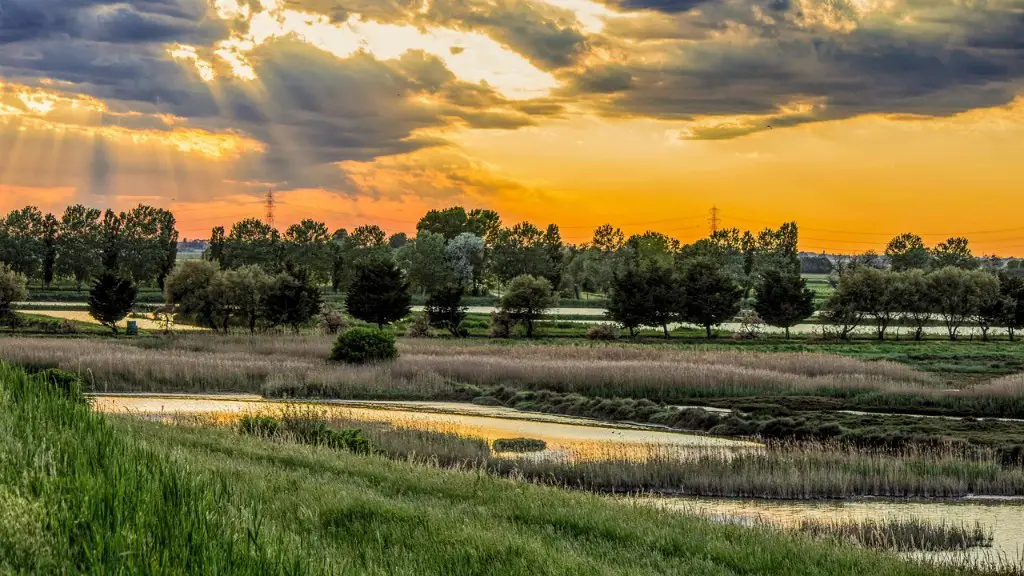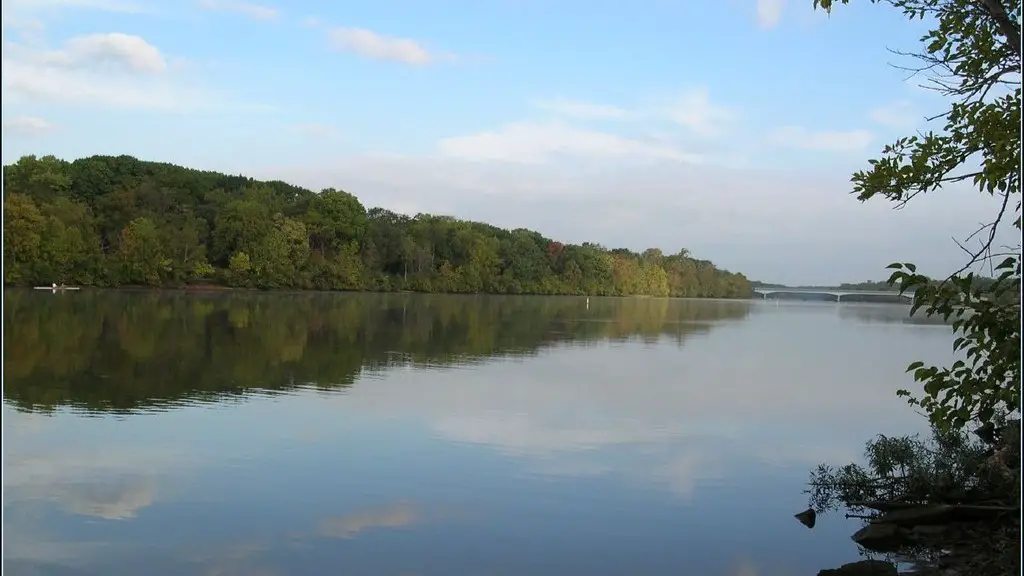The Mississippi River and the Freeze Factor
The mighty Mississippi is the largest river system in the United States and the fourth longest in the world. Spanning more than 3,000 miles, it courses through 10 states, draining water from 31 US states, from Minnesota east through the Louisiana Delta.
The science of river ecology reveals much about this incredible body of water and its potential to freeze. Temperatures in parts of the Mississippi River can reach below 32 degrees F during the winter, and ice can form on large areas of the river if it’s cold enough. In the small plains states, temperatures can be quite cold enough to solidify the river’s surface, depending on certain factors.
As a general rule, though, the middle and lower sections of the Mississippi experience too much turbulence, too much movement, and are simply too shallow to freeze. The river doesn’t just “stop”; it keeps flowing and the current prevents anything from forming on the surface except for a light dusting of ice. In most cases, it’s impossible for the Mississippi to freeze enough to create a massive sheet of ice over its entire basin.
However, there are exceptions. There have been times when the Mississippi has indeed frozen over in places. In recent years, areas around Minneapolis and St. Louis have frozen over due to a combination of extremely cold temperatures, lack of current and the shallow depth of the rivers in those areas. But that’s to be expected in any river when conditions are right.
Interestingly, the Mississippi is able to freeze at its headwaters, where the water is generally much shallower. In those areas, freezing temperatures can cause the surface of the river to bridge over, allowing locals to traverse the otherwise open expanse of water. In rare cases, an ice bridge can stretch for miles, offering something to the communities along the Mississippi that they’d never expect from such a powerful river.
River experts say ice formation is significantly more likely in smaller tributaries that empty into the Mississippi. These smaller branches typically become isolated from lapping waves and swirling eddies, allowing the water to calm down and reach temperatures cold enough to freeze if the temperatures drop far enough. Yet another phenomenon is known as “bulbous ice,” which describes when an area of frozen water expands outwards like a bubble due to the absence of wind and cold weather.
So while the Mississippi doesn’t usually freeze over, the river’s surface can become icy and treacherous in certain parts of the year. During winter months, local authorities tend to post warnings and advisories, alerting citizens to the potential hazards if they don’t take the proper precautions. As always, it’s best to heed such warnings, as the conditions of the river can change dramatically and quickly, often catching hydrologists and residents alike by surprise.
Reflections on the Freeze
Though the overall freeze factor of the Mississippi River is inherently low, the winter months infuse a kind of serenity that can only be found in a frozen river. The surface becomes still and calm, ushering in a unique opportunity for exploration and recreation. Activities like ice fishing, snowshoeing, and cross-country skiing are possible and locals renew their appreciation for the river during these months.
Geographic diversity and interesting fauna play a part in the formation of frozen landscapes, too. Frozen regions along the north and central Mississippi can create quite a picture, as natural aquatic denizens like beavers and muskrats hibernate beneath sheets of uniform glaze and birds flock to any patches of ice-free water.
The possibility of such frigid conditions also reveals just how resilient the Mississippi River is. Despite the fluctuating temperatures and unpredictable elements, the river continues to move downstream in the same course it’s been following since hundreds of millions of years ago. This process of adaptation is one of the Mississippi’s strongest assets and one that should be properly respected by those who use it.
Most importantly, the variability opens up different pathways for every season. A trip down the Mississippi at any time of year will provide something new; the river is ever-changing and always exciting. Whether its summer fishing or winter cross-country skiing, the Mississippi River will always be a place of constant surprise and exploration.
Why the River Volume Affects the Freeze
When attempting to discern the freeze factor of the Mississippi River, it’s important to consider volume. Every year, billions of gallons of water drain into the Mississippi from hundreds of sources. This input of incoming water keeps the river flowing – an important factor for avoiding widespread ice formation.
Much of the water released into the Mississippi comes from the Gulf of Mexico, where it’s generally warmer than the river’s northern climates. As this relatively warm source continually re-enters the river, it acts as an agent of thaw, contributing to more consistent temperatures throughout the rest of the year. And since fluctuations in water volume often create pockets and eddies around the river, the flow of incoming water also has a milder effect on surface temperatures.
Ultimately, this lower input of water will keep the river’s temperature relatively stable, thus preventing the formation of massive sheets of ice. In addition, the turbulence of the Mississippi’s flow should be taken into account when contemplating the freeze factor.
While the reach of the river’s turbulence can be felt powerfully throughout the entire river, its effects are the strongest in the middle and lower sections of the Mississippi. As a result, these regions are the least likely to experience complete freezes – unless the circumstances are exceptional.
The Human Factor
It’s also important to consider the human influence when discussing ice formation on the Mississippi River. Over the years, man-made activities such as industry, construction and dams have contributed to the river’s temperatures, often degrading it and making it more prone to host favorable conditions for ice formation in certain areas.
This kind of human interaction with the river has proven controversial and hazardous for river life, though many of the environmental regulations that have been put in place to regulate these actions have been successful in making the river safer for humans and wildlife alike.
In some places, human intervention has adulterated the flow of the Mississippi, creating oxbow lakes that don’t allow the river to carry on its natural course. In these areas, it’s possible for the freezing temperatures to bridge the lake and create a solid ice bridge, something that would otherwise not occur in a typical annual cycle.
In addition, artificial markets such as ice skating rinks, water parks, and effluents from power plants also contribute to the freeze factor. In each of these cases, cold water is continually released into the river – often at a much colder temperature than the Mississippi’s ambient temperature – thus having an overall cooling effect in the area.
What Role Does the Wind Play?
In the case of ice formation on the Mississippi, the wind can also have an effect. Winds blowing across the river’s surface make a small impact on the river’s temperature by carrying away a degree or two of heat. This means that even during mild winter days, it’s still possible for parts of the river to become icy if the winds are strong enough.
Winds can also whip up waves and cause ice sheets to disintegrate quickly. In extreme cases, temperatures can drop quickly when this occurs, thus causing further ice formation. However, since the wind is less likely to cause widespread cooling in the deeper parts of the Mississippi, its presence is less pronounced when compared to other environmental factors.
Dealing with Freeze
Although much of the Mississippi River will remain unaffected by ice formation, there are still some important safety considerations to take into account. The slower parts of the river, along with shallower regions and backwaters can easily become icy during the winter and temperatures can dip dangerously low without warning.
In regards to fishing and other recreational activities, anglers and boaters should check their local forecasts before heading out. Similarly, if individuals plan to venture onto the frozen river, they should bring proper gear and warn others of potential risks.
Additionally, local authorities also caution against walking on ice. Even if the surface appears to be solid, it’s usually unsafe and crossing the Mississippi during freezing temperatures is best done in the company of an expert. Wearing a life jacket at all times can also be beneficial, as the icy waters of the Mississippi can be especially daunting.
Conclusion
In most cases, the Mississippi River is too large and too turbulent to freeze over remarkably and for long periods of time. While pockets of ice might form in colder climates, areas of complete freeze are largely limited to upstream tributaries and shallower lake systems. Bird watching and other winter activities can still be done safely and responsibly, but with extreme caution.





